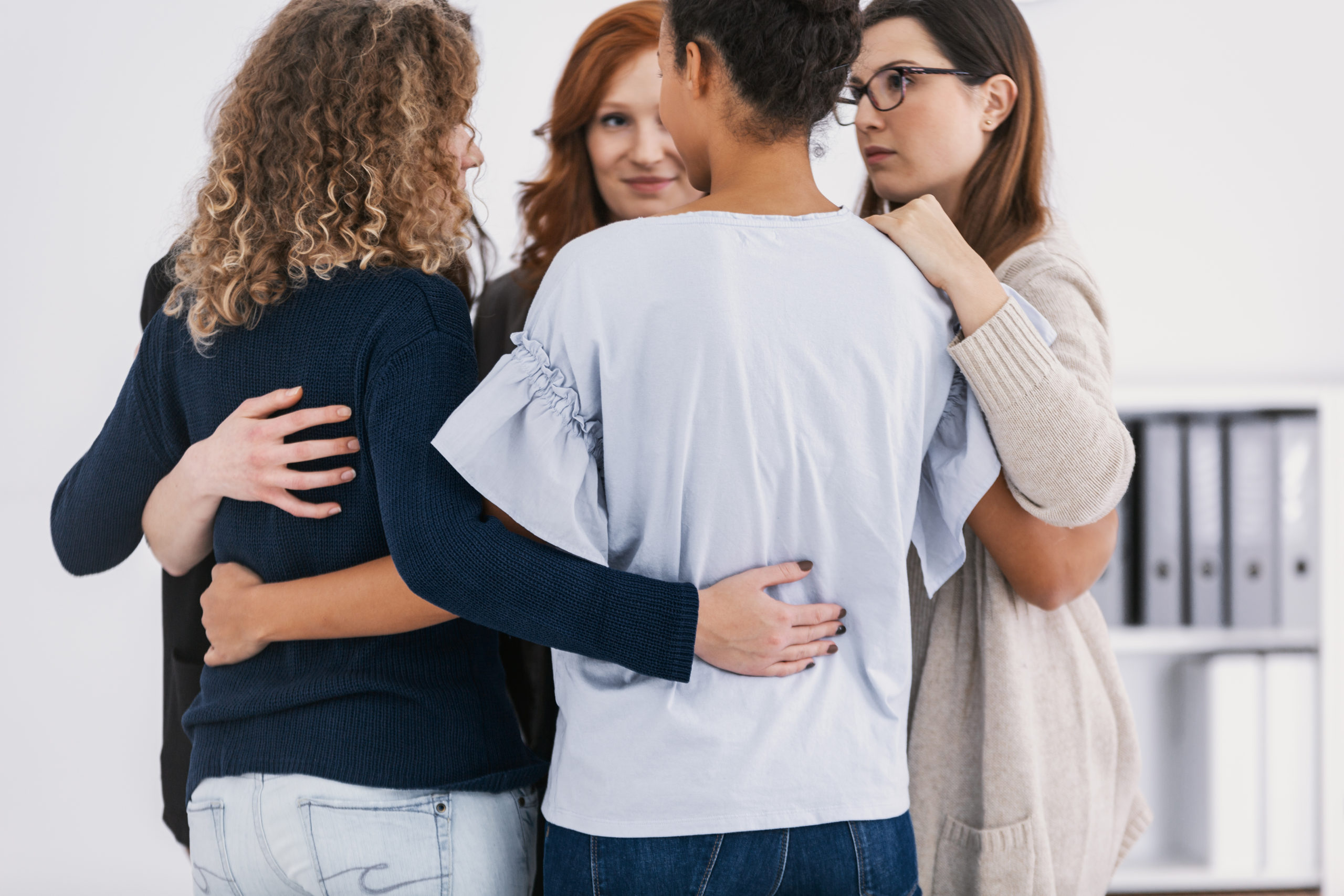

By: Lakeview Health
Before we get to the pluses and minuses (mostly pluses!) of this increasingly popular addiction treatment approach, let’s define two key terms first: gender-specific treatment versus gender-responsive treatment.
Gender-specific treatment in a rehab setting simply means having separate facilities—one for women, one for men. During daily programming, the two genders sometimes stay separate, and sometimes mingle.
With gender-responsive treatment, on the other hand, the gender split runs through everything—from separate facilities and the design of the physical environment to the daily programming and issues covered during therapy sessions.
In other words, gender-specific treatment is essentially the “lite” version, whereas gender-responsive treatment takes things up several notches. I’m a big advocate of the latter. We offer it and stand behind it at Lakeview Health.
In my opinion, there’s not nearly enough gender-responsive treatment in the addiction treatment world yet, despite its growing success and acceptance. Through media outreach like this and other advocacy efforts, I’m doing what I can to change that.
Gender-responsive treatment: The basics
The premise behind gender-responsive treatment is three-fold:
- Women and men often develop addictions for reasons that are specific to their gender.
- Women and men often seek treatment for reasons that are specific to their gender.
- Finally, women and men frequently respond to treatment for reasons that are specific to their gender.
In a nutshell, women and men often get addicted, go into treatment, and respond to treatment for gender-based reasons. Venus and Mars, right? That’s correct.
And it’s why this type of gender-responsive treatment is needed, and why it is successful.
Here’s how it works in practice
A key benefit of gender-responsive treatment is that it can address the unique challenges each gender faces. For instance, women can more easily discuss motherhood, pregnancy, and the challenges they face in the workforce.
For their part, men often find it easier to address anger issues, how to healthily express emotions, and the pressure to appear strong.
Gender-responsive treatment may also provide more effective relapse prevention techniques that people can use in the weeks, months, and years after they leave treatment. Some recovery strategies that work well for men don’t always work as well for women, and vice versa. Gender-responsive treatment makes this kind of customization possible—and it’s powerful.
Top benefits of gender-responsive treatment
For women:
- Allows women to share about social pressures, expectations, and other personal experiences.
- Helps eliminate any potential distractions that may occur during treatment.
- Helps women get back in touch with self-care, relaxation, and building community with each other.
For men:
- Allows men to display their emotions and vulnerability more freely.
- Enables men to be less competitive with the people around them.
- Helps men support and care for each other more openly.
- Helps men develop strong and reliable relationships.
- Helps prevent men from always using humor as a tactic to deflect questions or concerns.
Where you eat your meals can make a difference
Almost everything is tailored at a gender-responsive treatment center—including the physical spaces where patients spend their time. A good example of this comes from here at Lakeview Health. We have a women’s cafeteria and a men’s cafeteria. The women’s cafeteria uses softer lighting and colors, there are no TVs, quieter music (if any), and a more communal sitting arrangement.
The men’s cafeteria, on the other hand, is designed like a sports bar. The space includes bold colors, high-energy modern design, a big screen TV, and yes, wings sometimes show up on the menu.
An intentional side effect of this setup is that the men get used to being in this type of environment without the alcohol. Once they leave our center, that healthy association (sports bar + no alcohol) goes with them. It’s essentially exposure therapy.
Women tend to be big proponents of gender-responsive treatment
Many treatment centers that use gender-responsive treatment have found that women sometimes respond to it even better than men. Why? Among other reasons, the data shows that a relatively high percentage of women who come into treatment have experienced either trauma or abuse in their past. So it makes sense that women would be more comfortable talking about this difficult personal history in a women-only setting.
Also, men in general are more likely to go into addiction treatment than women. That’s because women often have more childcare responsibilities than men, tend to be less financially able to seek treatment, and are simply more reluctant to do it—for a host of reasons.
Research also shows that, for physiological reasons, women tend to get addicted faster than men, and get physically sicker faster as well—with liver problems, high blood pressure, breast cancer, and other health conditions. So they need the addiction and medical care, but can still be more reluctant to seek it.
All the above-mentioned factors may set women up to be a more captive audience for gender-responsive treatment.
5 things to look for in a women’s program
A gender-responsive treatment program for women needs to include certain areas of expertise and awareness, according to the Substance Abuse and Mental Health Services Administration (SAMHSA). Among them:
- In-house medical expertise in women’s unique health concerns and conditions.
- An essential, baseline understanding that the use of drugs or alcohol in no way makes a woman morally or ethically suspect.
- A trauma-informed care component that runs throughout the center’s programming.
- A strengths-based approach that makes use of a woman’s personality strengths and skill set to build resiliency, coping strategies, competence, and quality of life.
- A high level of training in and awareness of gender-responsive treatment principles among all employees, including clinicians, administration, and support staff.
The transgender, non-binary challenge
Gender-responsive treatment presents an obvious challenge both for the transgender or non-binary person who seeks addiction treatment, and for the treatment center employees who provide it. The two-pronged question the potential patient faces: Do I have to choose genders, and if so, which one?
I could talk about this issue all day, as it’s important, and there are no simple answers. It’s something we in the addiction treatment field need to grapple with until we get it right. In fact, many trans and non-binary patients may even prefer the old version of addiction treatment where people were treated together with less regard for gender issues. This population already struggles with isolation and higher rates of mental health challenges, so forcing a choice may not be the best fit.
It’s true, the old way was a simpler approach, and it had its upsides. But gender-responsive treatment is here to stay, for lots of great reasons, and we’re going to need to make it work for everyone. I’m confident we can do that.
Ask the questions, it’s important, you deserve it
My advice for now, if you or a loved one is trans or non-binary and you need addiction help, is to ask the admissions specialist about it when you contact an addiction treatment center. If that person doesn’t know the answers, ask to speak to the staff expert. Don’t hesitate to bring it up, as it’s an important part of who you are. If you’re not happy with what you hear, keep looking.
Real world results
Gender-responsive treatment doesn’t have all the answers, and it’s not perfect. But I believe it’s a huge and positive development in the addiction treatment field, and it’s only going to keep getting better.
I will end with two key facts that have been studied and show that this treatment works:
- People stay in treatment longer when they’re in a gender-responsive setting (a longer stay in rehab is almost always more effective than a short stay).
- Relapse rates are lower among people who complete gender-responsive programs.
That’s proof that we’re on the right track.
Addiction Treatment at Lakeview Health
If you or a loved one is struggling with a substance use disorder, contact Lakeview Health today at [Direct]. Our team is ready to help with the admissions process and begin addiction treatment.





